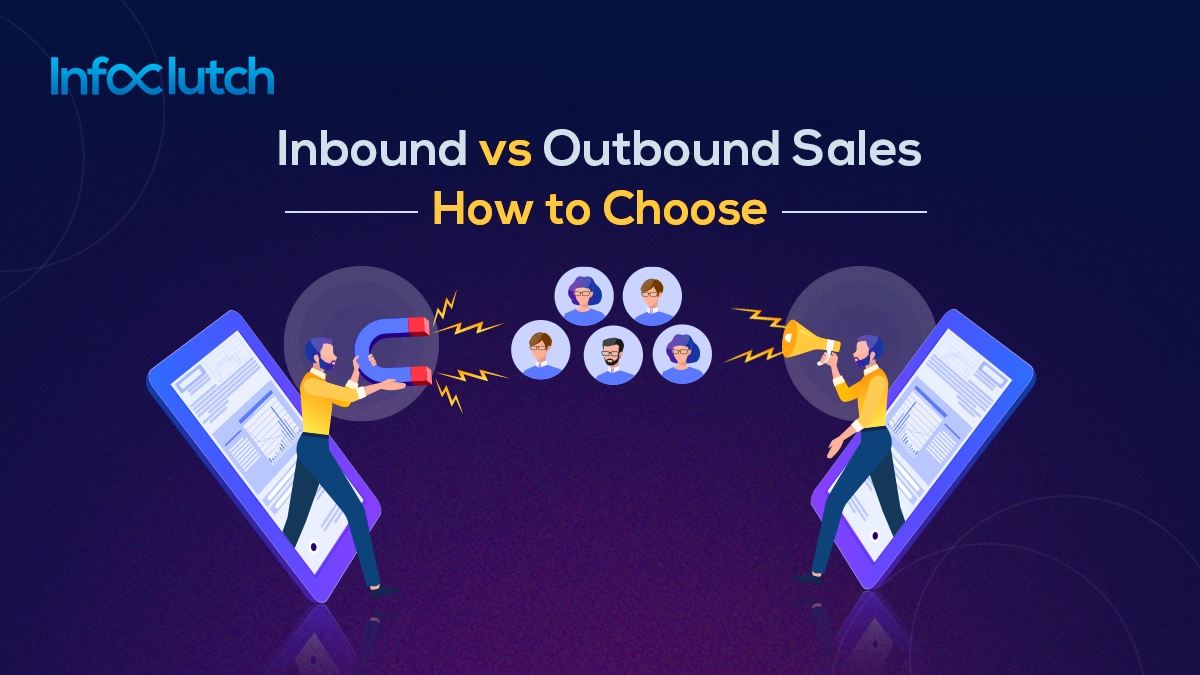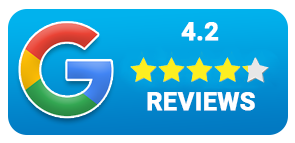Inbound & outbound sales are the strategies that anchor a business’ growth and govern parameters on brand visibility in the market. These sales strategies can spearhead your business services & products to a specific targeted audience, which results in growth in your business and forms the sales pipelines for higher conversion.
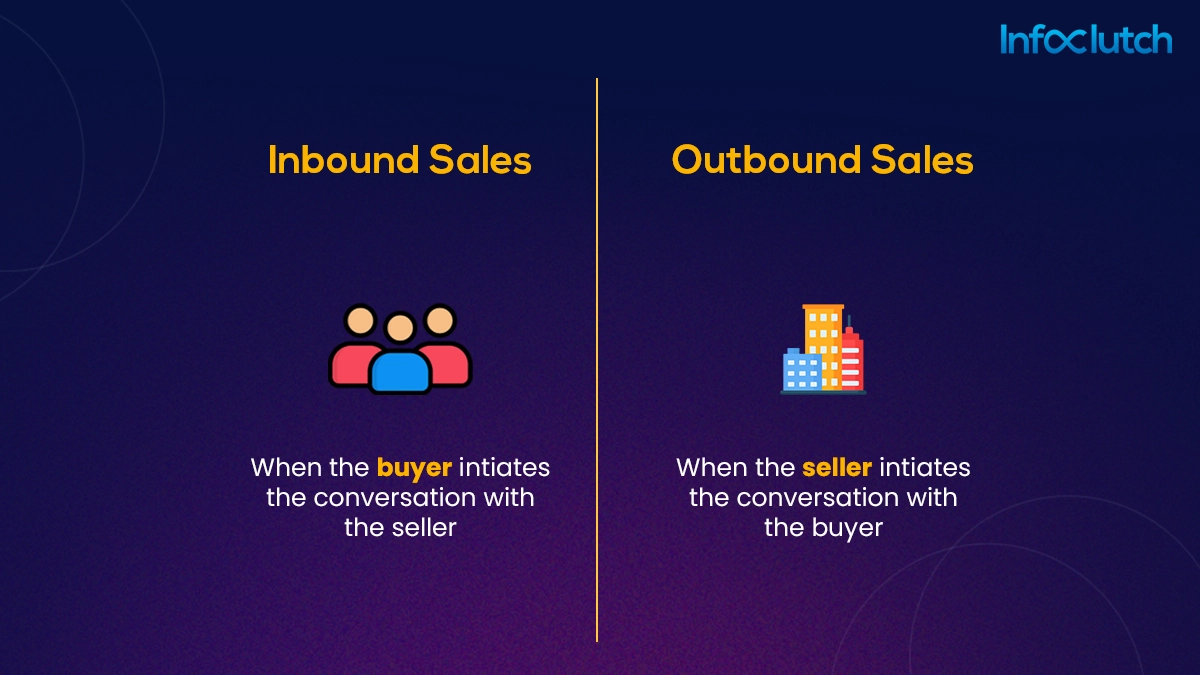
- 18% of marketers believed that the outbound practices delivered them the highest number of leads in their team.
- Every 3 out of 4 marketers work on the insights the sales team provides for identifying their audience for content marketing.
- 47% of buyers review 3-5 sets of the organization’s curated content before taking the sales call with the representatives.
We will brush up on the points describing what inbound vs. outbound sales are, their advantages & disadvantages.
What is Inbound Sales?
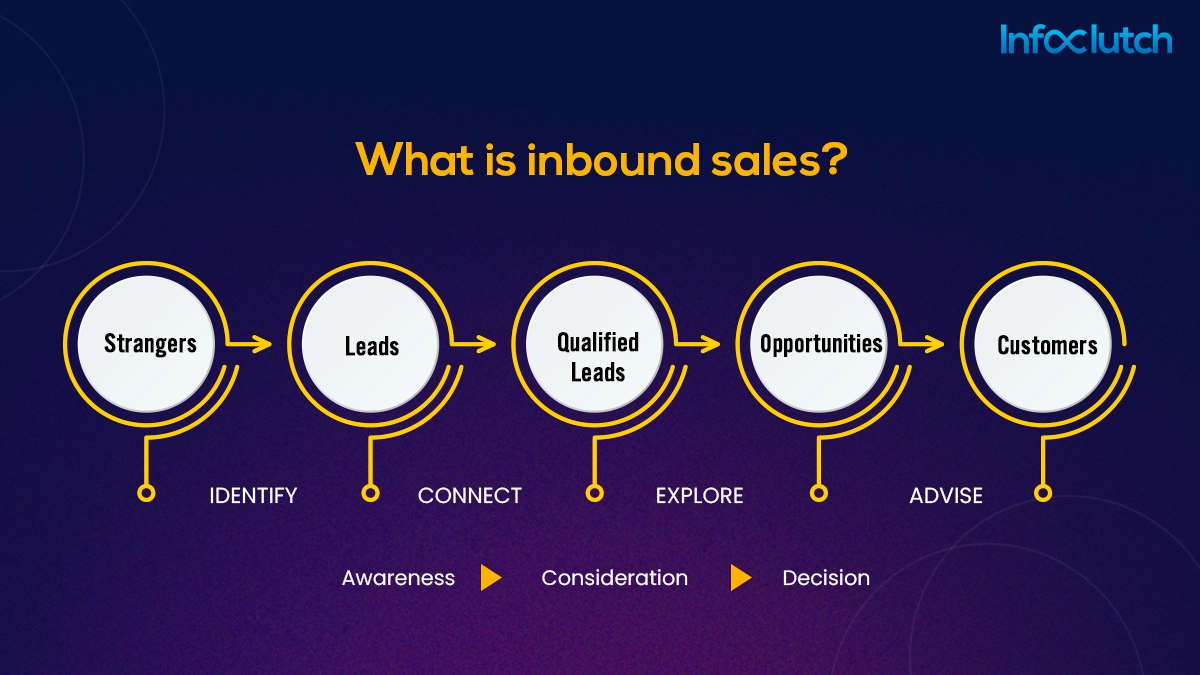
Inbound sales operate on a user-centric approach where the potential prospects reach out to the brand for seeking business details about their products and services. Inbound sales help businesses to get identified organically to their audience by attracting their attention using SEO, social media creatives, campaigns, and content marketing.
What are the Advantages of Having an Inbound Sales Strategy?
Inbound sales deliver hefty results for the organizations that implement the techniques decisively. Here’s the list of advantages that you can expect with an inbound sales strategy:
1) Personalized user-centric approach
Each prospective client’s needs vary, and discovering an advanced yet suitable bespoken approach to deliver a solution to their requirement can help the salesperson guide the prospective lead through various stages of the sales cycle, ensuring quality sales conversion.
2) Maximize business efficiently
Marketing automation can assist the sales team in accommodating the complete descriptive information of the prospective client’s data. This enables minimal errors in missing vital details and setting up various marketing sales strategies, resulting in an effective closure.
3) Filtered sales insights
The sales team can collaborate with the decision-makers to identify the detailed metrics and analyze filtered sales insights that highlights the errors that underwent actions. It can becomes the guardrail that companies should look to improve in future instances. This can come in handy during the fine-tuning stages of the sales techniques, resulting in growth in lead conversion.
4) Quality user engagement
Owning and presenting the entire dataset metrics can prepare the salesperson to handle the prospective lead better professionally. A deeper understanding of the prospects’ needs can help the business deliver a better user interactive experience during the sales cycle.
5) Enhanced conversion rate
The accurate user data obtained using inbound sales can help businesses leverage various customizable solutions suiting the prospects’ needs. This eliminates minor conflicting thoughts that occurred during the ongoing sales cycle with minimal change of mind due to competitors’ offers and negotiations. It guides the prospective decision makers to a better space by providing thought clarity and resulting in sales conversion.
Disadvantages of Inbound Sales Strategy
Here are the disadvantages of the inbound sales strategy:
- The quality of leads generated via inbound sales can be ineffective and might require long hours to nurture the leads, causing a serious blockage in sales efficiency and hampering workflow productivity.
- Attracting organic traffic using inbound sales can cause delays in the lead generation counts as the process requires a specific duration of time to educate the audience. It restricts the growth rate and lowers the ROI by delaying revenue generation.
- Companies that are eyeing rapid growth of their brand in the market against competitors have to endure the backlash on business scalability. The strategized growth plans require a faster result-delivering strategy, and inbound sales are not ideal for the given circumstances.
- Creative blockades can dismantle a business entirely. All brands are actively seeking out ways to appear relevant in the minds of the audience. Standing out often in the business domain gets strenuous and requires constant creativity to overhaul the challenges.
What are Outbound Sales?
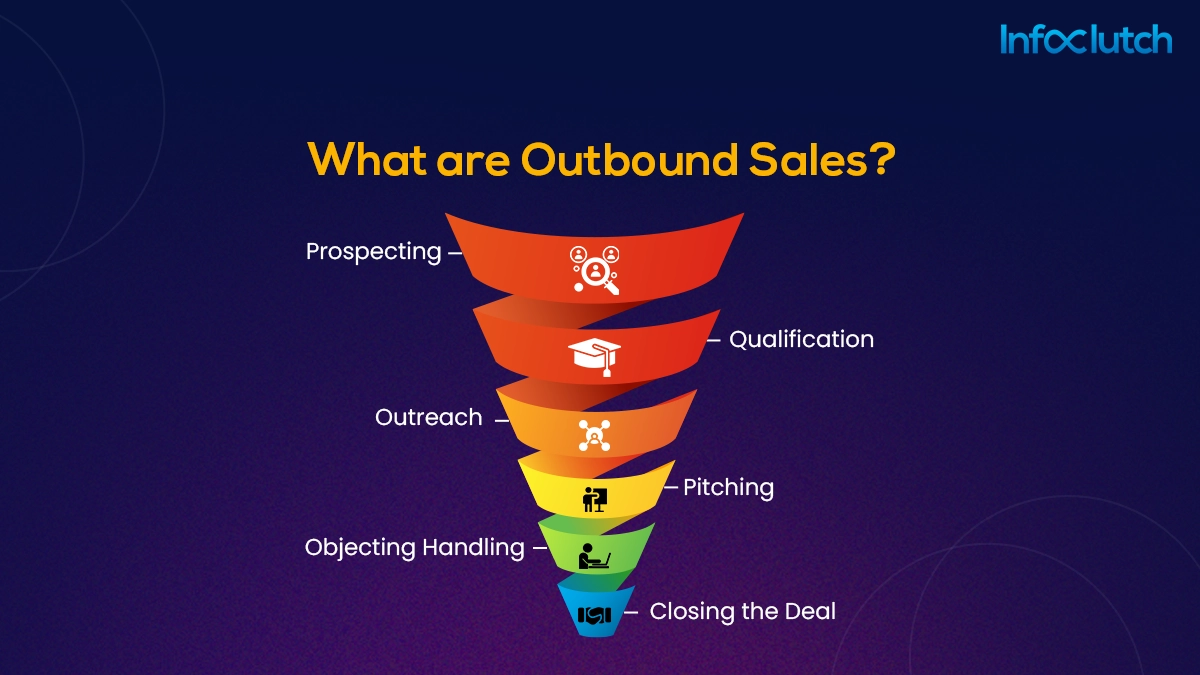
Outbound sales are the primary process of approaching the potential prospects on first hand to develop rapport and relation to close sales deals. Outbound sales strategy emphasizes various channels such as targeted advertising, cold emailing & calls for reaching out to their targeted potential prospects.
What are the Advantages of Using Outbound Sales?
Outbound sales contain a plethora of opportunities that can be redeemed for achieving the business goals. The sales strategy can be deployed for the acquisition of larger sales conversions. Let us walk you through the advantages of implementing outbound sales in your business:
1) Faster purchasing decision-making
Outbound sales directly land businesses to interact and establish a meaningful rapport with their audience. Corporations using an outbound sales strategy can acquire a firm clutch while comprehending and handling the users’ needs. It lets the salesperson remain in the driver’s seat and control the interaction while pitching the business proposition. This includes marketing the USPs as the solution for better sales conversion.
2) Engaging user interaction
Outbound sales decimate any miscommunication, enabling both B2B parties to have clear-cut conversations about the business and the interested product. Embracing direct conversation allows sales agents to clearly understand prospects’ needs and weak points. Empathizing with their needs and requirements converts their hesitations into trust and dignifies your business as an industry leader against growing competition.
3) Automated tools flexibility
Automated tools are prone to attract efficiency in the organization as they frequently ease up the manual performing of repetitive tasks. Businesses can operate optimally by automating & aligning with the user’s interactive behavior on the website and other social media profiles. Companies can use marketing automation tools to engage and educate their targeted audience. Automating introductory formalities, such as personalized set reminders, follow-up emails, and more, can keep you connected with prospective leads. This results in acquiring high-yielding prospects with a proactive approach for a better sales conversion rate.
4) Better scope for targeting your audience
The primary step of an outbound sales strategy is identifying your prospects’ needs and empathizing with their challenges. Most organizations would prefer to form a business collaboration with corporations that understand their requirement effectively to deliver the desired solution. This eventually creates the Ideal Customer Profile (ICP) in the market against your competitors.
Advance your user-centric approach and stand a better chance of converting a lead into business clients. This can be procured by apprehending your prospect’s requirements by implementing personalized email blasts, cold calling, persuasive marketing tactics, and more. It eventually leads to multi-folding the chances of winning higher potential leads into sales conversion for your enterprise.
5) Impactful lead generation
The outbound sales strategy empowers marketers to find various tactics for generating high-class leads for their business. The salesperson can list the ongoing hurdles the corporations face and approach to deliver customized solutions to eliminate their misfortune. It would forge the establishment of various sales pipelines for acquiring , pouring leads picked up by cold calling, social selling, direct mail, and more. The higher the number of prospects your business contacts, the better result it can serve your enterprise.
Let us closely look at the components that set apart both sales strategies to identify the best ones.
Disadvantages of Outbound Sales Strategy
Here’s a list of proven disadvantages of outbound sales strategy:
- Outbound sales strategies are often associated with proactive techniques to render results that would benefit the organization. Every effective sales outreach comes at a cost; brands that are aiming to conduct user-oriented brand outreach require higher monetary investments.
- Cold outreach in outbound sales is often perceived with suspicions that organizations use to approach potential prospects. Any minor errors committed during the cold outreach phase can devastate the brand’s reputation and deplete the financial resources.
- Surpassing the user’s defense mechanism is a mammoth task as brands find it extremely challenging to develop the trust of their target audience during sales outreach. Since there is no face-to-face interaction, the approaching efforts need to be compounded to obtain the trust of the chief decision officers to proceed further in the sales cycle.
- Identifying and reaching out to the business leaders from the specific department can be challenging. Multiple rounds of outreach trials generate possibilities of tuning with a specific group of industry professionals. This comes after shelling out adequate resources, causing fluctuations while identifying the acquired ROI that the organization accumulated.Let us closely look at the components that set apart both sales strategies to identify the best ones.
Difference between Inbound and Outbound Sales Strategy
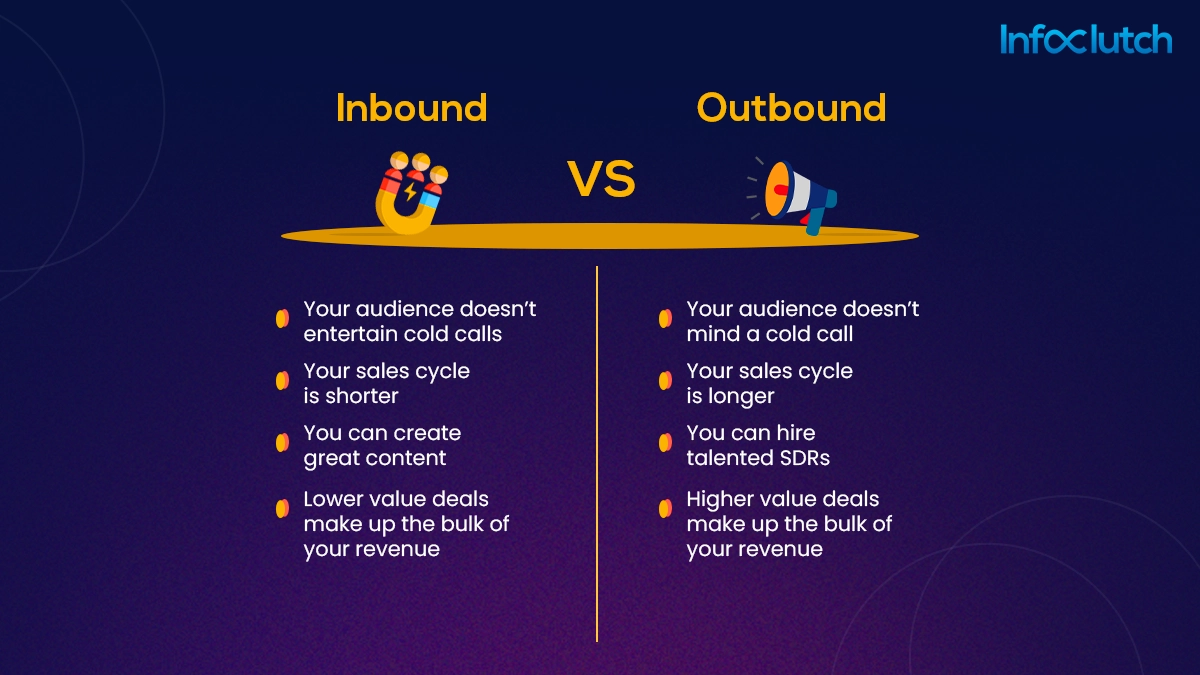
Both sales strategies have strengths and limitations that can help your corporation achieve its sales target. Here’s the list of the operating methods witnessed in inbound vs outbound sales strategy:
| Inbound Sales Strategy | Outbound Sales Strategy | |
|
Initial approach: |
An interested prospect makes the first move of contacting the organization. |
Aiming to obtain clients, a salesperson approaches the potential lead for presenting the initial pitch. |
|
Mediums: |
Search Engine Optimization (SEO), content marketing, social media marketing, blog posts, and more. |
Cold calling, email blasts, email marketing, trade shows, print media, and more. |
|
User interaction & engagement: |
The potential lead seeks out the service providers, resulting in better awareness of the products and solutions with high-quality user interaction. |
Prospects are approached unanticipated, resulting in lesser exposure to the particulars related to the product or service. They initially need to be more engaged. |
|
Operating efficiency: |
The company draws lesser investment to achieve a lower cost per lead. |
Businesses must spend more than average to gain leads when compared to the inbound sales strategy. |
| Business deliverables | A mixed fusion of financially moderate investment and a consistent user-centric approach can help your business attain its sales goals. |
Businesses using outbound sales strategies can attain their business goals at a faster rate by targeting selective prospect leads for better quality user engagement. |
Factors to Consider for Choosing Inbound vs Outbound Sales Strategy
Businesses must stay sharp in making critical sales strategy decisions. The best business leaders in the market perform a market analysis to pick out the most suitable sets of sales strategies that can bear fruits at minimum investment for sales growth.
Let us walk you through the factors that must be considered before making a business-impacting decision:
1) How do you allocate a budget?
The decision-makers and the stakeholders must list the remaining budget that can be utilized. Strategize the feasible sales and the speed of the return on the investment.
An Inbound sales strategy operates gradually and requires longer to deliver the desired sales goals. However, outbound sales work on a short basis of conversion to provide the business goals faster with an adequate return on investment (ROI). Corporations must make their calls wisely by solely considering the requirements.
2) What is the minimum revenue per sale?
Businesses can decide by calculating the average cost per sale, which provides a clear picture of the investment that should be gambled on the sales strategy. Higher minimum sales revenue value can result in acquiring an outbound sales strategy for delivering the needed results faster due to its expensive nature.
On the other hand, if the sale value is lower, enterprises can opt for the inbound sales strategy based on their business obligations.
3) What are the ways to identify the size of your audience?
Based on the nature of delivering the sales goals, an inbound sales strategy can be implemented to handle and provide the information for an extensive set of targeted audiences. An outbound sales strategy can be deployed to operate and obtain the business metrics by addressing a shorter targeted audience for exchanging information.
4) How promptly do the decision-makers settle for making a purchase?
The data insights on sales conversion can help decision-makers narrow down the suitable solution for their business. Inbound sales can expedite the conversion cycle swiftly.
As the organization has already narrowed down their potential prospects, it reduces and shorten the sales cycle resulting is faster decision making. It is the suitable solution businesses can pursue to conquer sales conversion with minimum hassle.
5) How much information count is required to be delivered for the closure of your products?
The product’s information must be delivered concisely, educating the users and keeping them curious and wanting to learn more about your services. Inbound sales strategies emphasize having information by highlighting the benefits and advantages of the services. On the other scale, outbound sales can be implemented to provide the values and significant unique selling points (USPs) of the product that can be used for pitching the product to the users by approaching them unannounced. It is deployed to inspire the targeted audience to achieve extensive lead conversions.
Final words
The market operates on a demand-and-supply approach; businesses must assess the market conditions & analyze the data metrics to identify the suitable approach that caters to the needs of their target audience. An inbound and outbound sales strategy can scale your sales department only when applied effectively based on the business necessities. Evaluate your resources and the needs of your audience to deliver personalized results for remarkable conversion growth.

